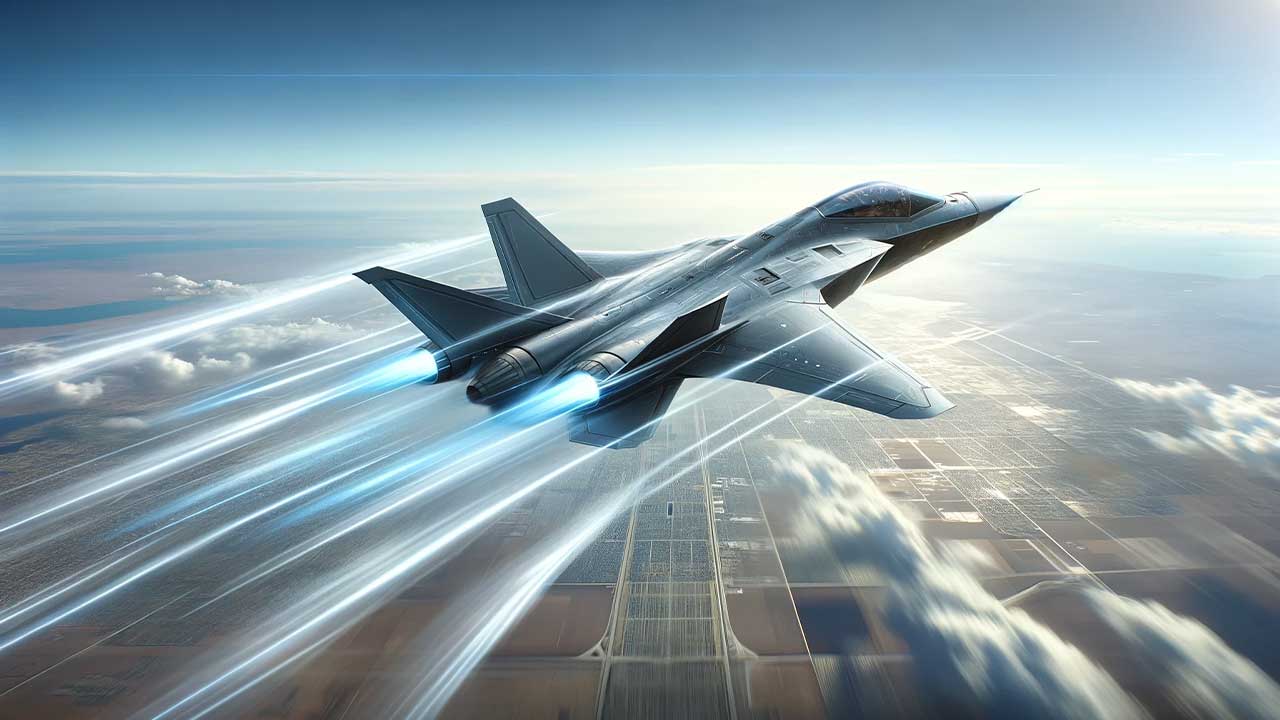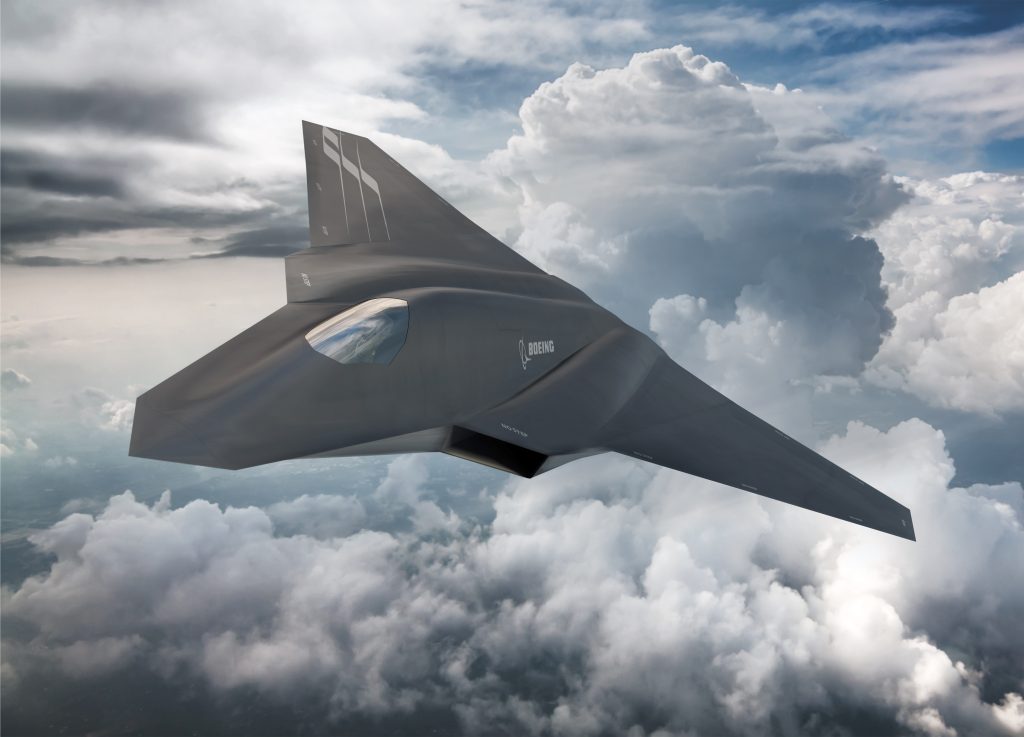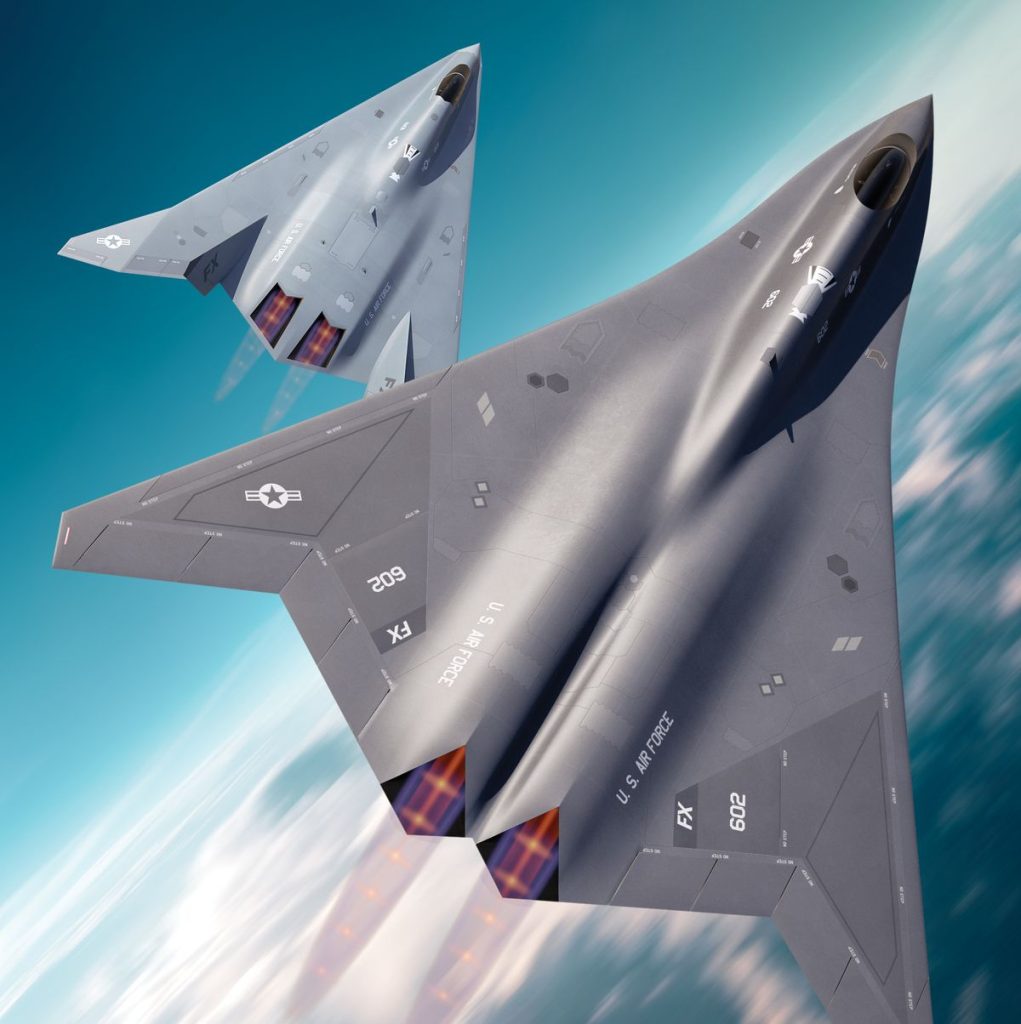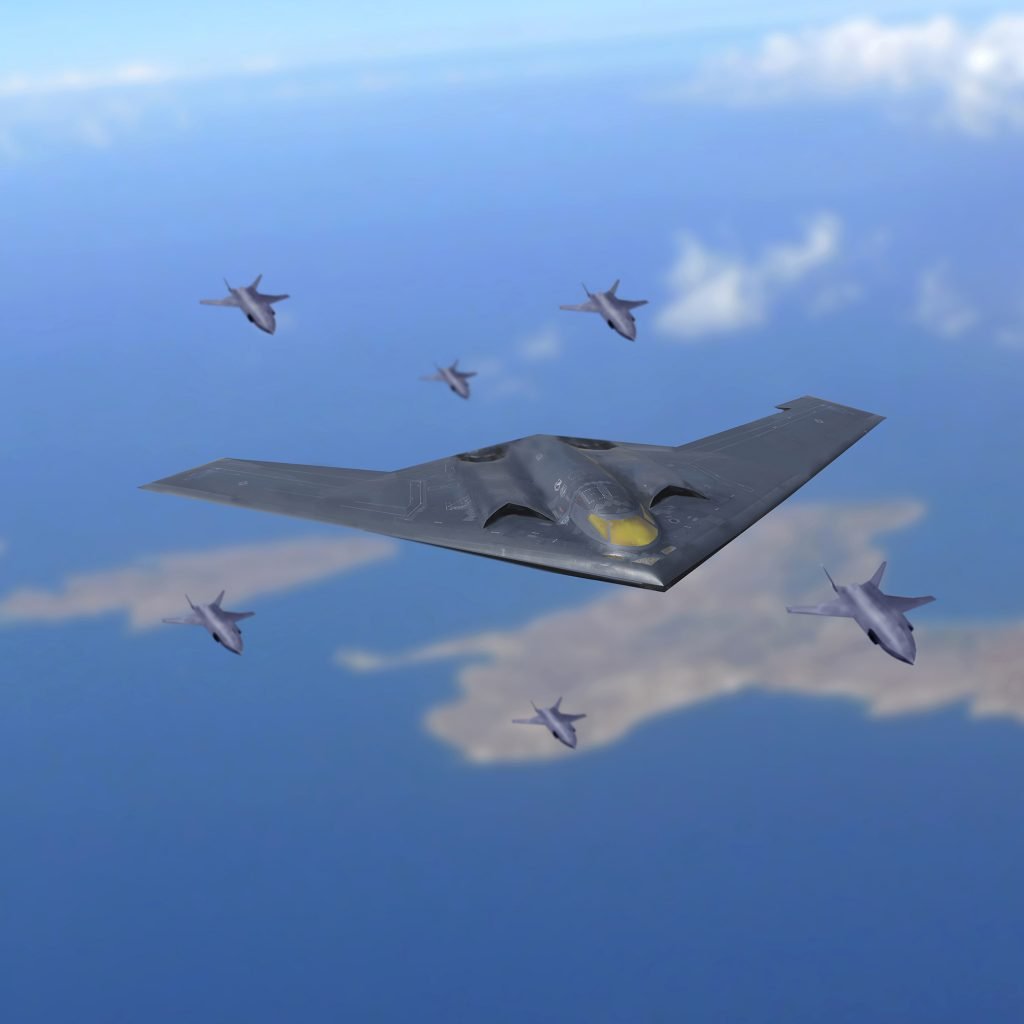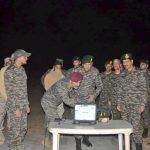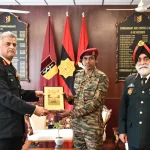The 21st century has ushered in an era of unprecedented technological advancements, and the realm of military aviation is no exception. The United States Air Force (USAF) has embarked on an ambitious endeavor to ensure its continued air superiority – the Next Generation Air Dominance (NGAD) program. This highly classified and secretive initiative is poised to transform the face of aerial warfare, redefining the very nature of air dominance.
At the heart of the NGAD program lies a revolutionary approach – a “system-of-systems” concept that moves away from the traditional singular platform-centric model. This innovative strategy envisions a network-connected family of systems, with a sixth-generation fighter aircraft serving as the centerpiece. Complementing this advanced manned platform will be a diverse array of assets, including multiple manned aircraft, loyal wingman-style unmanned aerial vehicles (UAVs), and cutting-edge command, control, and communication systems.
The NGAD program’s origins can be traced back to the Defense Advanced Research Projects Agency’s (DARPA) Air Dominance Initiative study, completed in 2014. This foundational work paved the way for the USAF’s Air Superiority 2030 Flight Plan, published in 2016, which underscored the need for multidomain solutions developed through a more agile acquisition process. The NGAD program emerged as the embodiment of this vision, with its system-of-systems approach at the forefront.
The NGAD Family of Systems
The NGAD program is designed to provide the USAF with a comprehensive suite of capabilities to ensure air superiority in the face of increasingly complex and contested battlespaces. At the core of this family of systems is the sixth-generation fighter aircraft, a highly advanced and stealthy platform that will succeed the venerable F-22 Raptor beginning in the 2030s.
The Sixth-Generation Fighter Jet
The NGAD fighter jet is envisioned to be a true marvel of engineering, boasting enhanced survivability, adaptability, persistence, and interoperability in the air domain. While the detailed specifications of this aircraft remain closely guarded secrets, it is expected to excel in both air-to-air and air-to-ground missions, providing unparalleled air superiority for the joint force.
Collaborative Combat Aircraft (CCA)
Recognizing the significant cost associated with procuring the next-generation manned fighter, the USAF has also placed a strong emphasis on the development of Collaborative Combat Aircraft (CCAs). These less-expensive unmanned platforms are designed to operate in tandem with the crewed NGAD fighters or autonomously, providing affordable mass and augmenting the fighter’s capabilities.
CCAs can be configured to carry advanced sensors, electronic warfare packages, or additional munitions, allowing them to assume diverse roles such as shooters, jammers, or sensor platforms. This “loyal wingman” concept promises to enhance the overall combat effectiveness of the NGAD family of systems.
Advanced Weapons, Sensors, and Communication Systems
The NGAD program also encompasses the development of cutting-edge weapons, sensors, and communication systems to enable mission success in highly contested battlespaces. These advanced technologies will be seamlessly integrated into the network-connected NGAD family, ensuring unparalleled lethality, situational awareness, and resilient information sharing.
Technological Innovations and Acquisition Strategies
The NGAD program is not merely a pursuit of new hardware; it also represents a significant shift in the USAF’s approach to acquisition and technological development. Several key innovations and strategic decisions are shaping the program’s trajectory.
Digital Engineering and Rapid Prototyping
The NGAD program leverages the power of digital engineering, which can accelerate the development and production of the aircraft while reducing costs. This approach allows for rapid prototyping and iterative refinement, enabling the USAF to quickly adapt to evolving operational requirements.
Next-Generation Adaptive Propulsion (NGAP)
The NGAD fighter jet will be powered by advanced engines developed through the Next-Generation Adaptive Propulsion (NGAP) program. This initiative, involving leading aerospace companies like Pratt & Whitney, General Electric, Lockheed Martin, Boeing, and Northrop Grumman, aims to deliver solutions for enhanced survivability, improved fuel efficiency, and reliable power and thermal management.
The insights gained from the USAF’s Adaptive Engine Transition Program (AETP) have been instrumental in shaping the NGAP program, ensuring that the next-generation fighter will have the necessary range, weapon, and sensor capabilities, as well as the endurance to fulfill evolving operational needs.
Open Architecture and Acquisition Strategies
The NGAD program has also adopted an open architecture approach, which will enable the implementation of future upgrades and maximize competition for system enhancements throughout the life cycle. This strategy aims to cut down on maintenance and sustainment costs, a key challenge faced in recent USAF acquisition programs.
The USAF’s acquisition strategy for the NGAD program seeks to widen the industrial base, bringing in innovative warfighting capabilities more quickly to the forces. This approach is designed to mitigate the challenges encountered in previous programs, ensuring that the NGAD family of systems remains adaptable and responsive to emerging threats and operational requirements.
Funding and Budget Allocations
The NGAD program represents a significant investment for the USAF, with substantial funding allocated to its research, development, testing, and evaluation (RDT&E) efforts. Over the next five years, the program is estimated to require $16 billion, a clear testament to the Air Force’s commitment to this transformative initiative.
In the budget proposal for the fiscal year 2024 (FY24), the USAF has requested $2.3 billion for the NGAD program, including investments to further develop the fighter aircraft and the NGAP power plant. This figure is a significant increase from the approximately $1.7 billion allocated in the FY23 budget request, reflecting the program’s growing importance and momentum.
Looking ahead, the USAF has projected a staggering $28.48 billion in NGAD-related spending for the fiscal years 2025-2029. This allocation includes not only the crewed NGAD fighter but also the Collaborative Combat Aircraft (CCA) program, which is expected to field at least 1,000 unmanned units by 2028.
Operational Capabilities and Deployment Timeline
The NGAD fighter aircraft is envisioned to play a crucial role in conducting counter-air missions, performing both air-to-air strikes and attacks on ground-based targets to provide air superiority for the joint force. Its enhanced survivability, adaptability, persistence, and interoperability will be critical in navigating the increasingly complex and contested battlespaces of the future.
While the specific details of the NGAD fighter’s capabilities remain classified, the USAF has hinted at the possibility of developing two variants of the platform – one optimized for the European theater and another for the Pacific region. This flexibility underscores the program’s commitment to addressing the unique operational requirements of different theaters of conflict.
The NGAD fighter is expected to enter production by the end of the current decade, gradually replacing the aging F-22 Raptor fleet. The USAF’s initial procurement objective for the NGAD fighter is estimated to be in the range of 200-250 units, with the first operational units slated for deployment around 2030.
Alongside the crewed NGAD fighter, the Collaborative Combat Aircraft (CCA) program is also on a fast track, with the first units expected to be combat-ready by 2028. These unmanned platforms will complement the manned fighter, providing affordable mass and expanded mission capabilities to the NGAD family of systems.
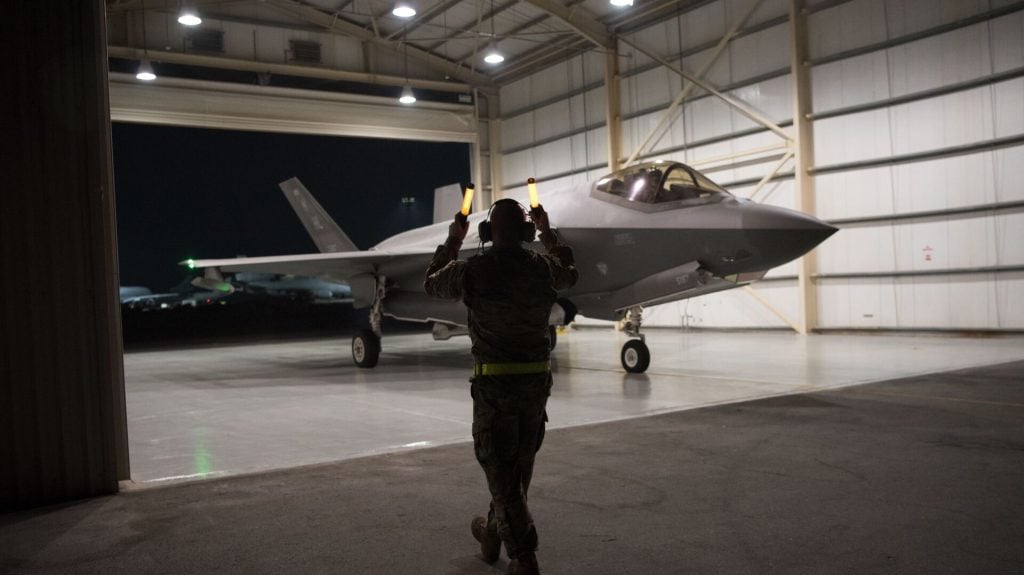
Collaboration and Partnerships
The NGAD program’s success is predicated on a collaborative ecosystem, with the USAF working closely with industry partners and leveraging the expertise of various aerospace and defense giants.
The Next-Generation Adaptive Propulsion (NGAP) program, for instance, has brought together Pratt & Whitney, General Electric, Lockheed Martin, Boeing, and Northrop Grumman, each awarded a ten-year, $975 million contract to develop the advanced engines that will power the NGAD fighter.
Similarly, the USAF has engaged with the broader defense industry in the source selection process for the NGAD combat jet platform, with the engineering and manufacturing development contract expected to be awarded in 2024. This collaborative approach aims to tap into the innovative capabilities of the industrial base, ensuring that the NGAD family of systems remains at the forefront of technological advancements.
Challenges and Considerations
While the NGAD program represents a bold and transformative vision for the USAF’s air dominance capabilities, it is not without its challenges and considerations.
The significant cost associated with procuring the next-generation manned fighter, estimated to be in the “multiple hundreds of millions” of dollars per aircraft, has prompted the USAF to explore more affordable solutions in the form of Collaborative Combat Aircraft. Striking the right balance between crewed and uncrewed platforms will be crucial to ensuring the NGAD family of systems remains a viable and sustainable investment.
Additionally, the highly classified nature of the NGAD program has led to limited public disclosure of its technical details and operational specifications. This secrecy, while necessary for safeguarding sensitive information, can also pose challenges in terms of transparency and public understanding of the program’s progress and capabilities.
The USAF’s commitment to an open architecture approach and agile acquisition strategies aims to address some of the challenges encountered in previous acquisition programs. However, the successful implementation of these strategies will require a concerted effort to foster a collaborative ecosystem, maintain technological superiority, and ensure seamless integration of the NGAD family of systems.
Conclusion
The Next Generation Air Dominance (NGAD) program represents a monumental shift in the USAF’s approach to air superiority and air dominance. By embracing a system-of-systems concept, leveraging cutting-edge technologies, and fostering a collaborative industrial landscape, the USAF is poised to redefine the future of aerial warfare.
As the NGAD program transitions into the engineering, manufacturing, and design phase, the anticipation and excitement within the defense community are palpable. The promise of a sixth-generation fighter jet, complemented by a network of unmanned platforms and advanced systems, holds the potential to ensure the USAF’s continued air supremacy for decades to come.
The NGAD program’s success will not only solidify the United States’ position as a global leader in military aviation but also inspire a new generation of defense innovators and strategists. As the USAF continues to navigate the complex and ever-evolving landscape of air dominance, the NGAD program stands as a testament to the power of vision, innovation, and unwavering commitment to military superiority.

